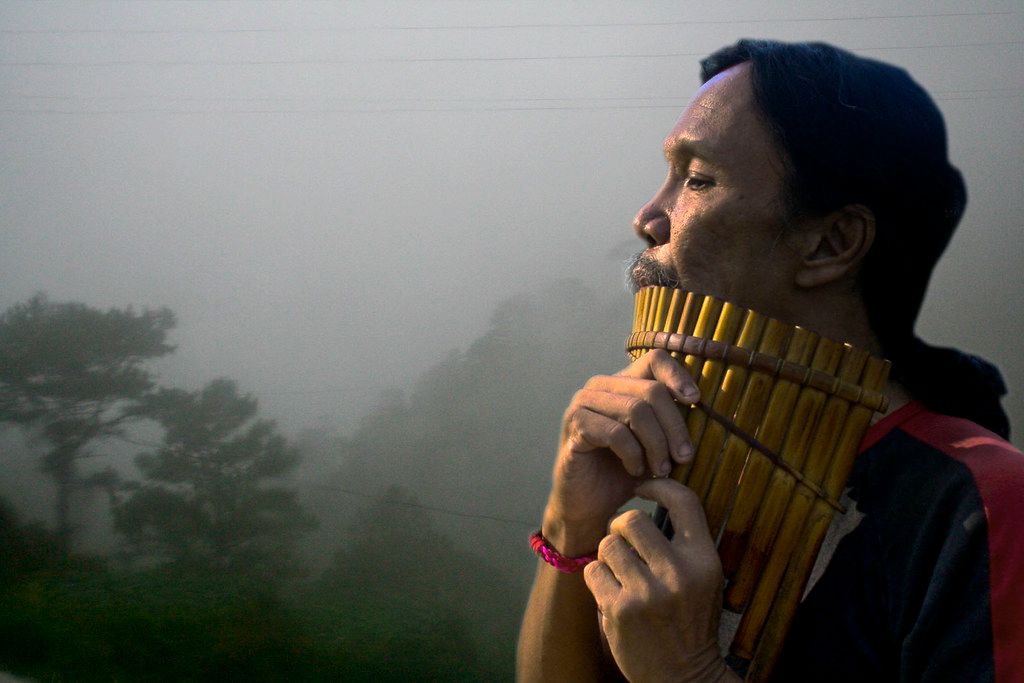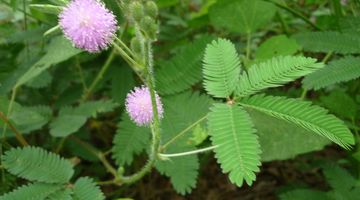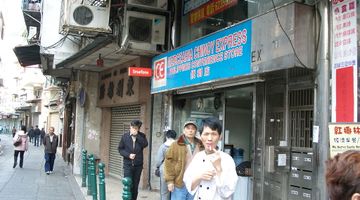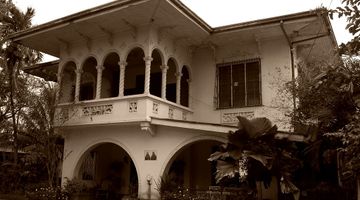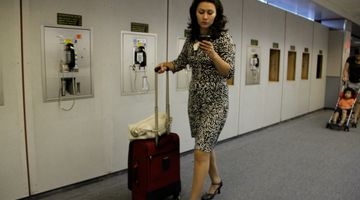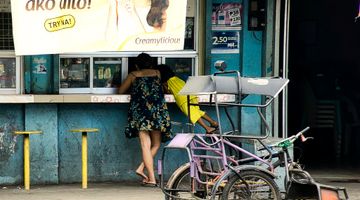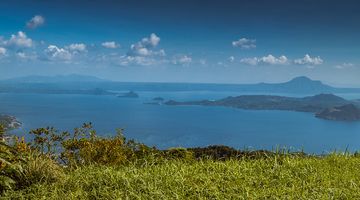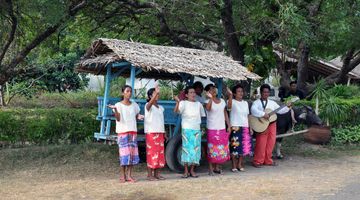Sagada Travel Guide
In a nutshell
The sleepy, mountain town of Northern Luzon, Sagada enchants its travellers with its dreamy limestone cliffs, cool mountain air, otherworldly charm and rich cultural heritage.
Why go to Sagada
Situated 5, 000 feet above sea level, this elevated town pulls travellers to its romantic pine tree peaks with an assortment of things to do and spectacles to see. Beautiful scenery and exceptionally friendly locals are what makes Sagada so appealing to the visitors of the Cordillera Region.
Very unusual for a tropical country such as the Philippines, Sagada has a cool and refreshing climate. Despite the chilly atmosphere, Sagada is kept warm and cosy as a result of the toothy smiles of welcoming, hospitable locals who, despite a somewhat challenging history, have sustained a vibrant tapestry of fascinating culture and tradition.
Much like the famous layered, Filipino dessert, halo-halo, Sagada too has a multitude of colourful layers to discover, explore and delight in. From spectacular hiking opportunities, invigorating waterfalls, spelunking in ancient caves and world-class sunrise and sunset viewpoints, the natural wonders of Sagada astound and amaze all those who journey here.
Especially well-known for its cliff-hanging coffins and burial caves, any visit to Sagada would be incomplete without exploring this enthralling, sacred tradition first-hand. This burial custom can be traced back more than 2000 years and visitors are understandably awe-struck when craning their heads to behold the steep cliffs with coffins nailed to the stone surface.
When to go to Sagada
The ideal time to pay Sagada a visit is from November to February. The weather during these months is cool and dry. Late December and early February will also get you the exciting bonus of an entertaining town festival. March to May are the dry months which means that Sagada can get uncomfortably dusty followed by typhoon season hitting in August to October.
Where to stay in Sagada
With many accommodation options to choose from, travellers are afforded the luxury of choice in deciding where to snooze for the night. Much like the most of the Philippines, lodging selections in Sagada are predominantly focused on inns, guesthouses and cosy lodges and fortunately, well within even the most cash-strapped backpacker’s budget.
For solo travellers who are eager to meet other travellers or for those who simply want to save on accommodation costs, Sagada also has a few centrally located, self-catering dormitories.
Although Sagada is a quaint, little town with only 11,000 inhabitants, during peak season and particularly December it tends to get especially busy. During December it is advisable to pre-book rooms or beds for your stay here as the peaceful town awakes from its slumber with the sounds of travellers arriving for the holiday season and the breathtakingly riveting, annual bonfire festival.
Where to eat in Sagada
Although the remoteness is what draws visitors to Sagada, this results in food supplies being somewhat restricted and variety in cuisine options from restaurant to restaurant are limited. Despite the similar menus, food is served in generous, tasty portions and local and international dishes are reasonably priced in many of the quirky, inviting cafes.
In addition to restaurants, many of the inns and guesthouses in Sagada have a common kitchen and those on a budget can opt to buy fresh ingredients in town and cook meals for themselves. If your trip is fortunate enough to fall on a Saturday, make sure to head on over to the main road where the concrete pavement is transformed into a lively, cheerful marketplace selling cheap, fresh produce and cooked, local food.
Homemade Saragan yoghurt is an absolute must-try and is a typical item in market eateries and restaurant menus. Some of the cafes have incorporated the yoghurt into appetizing lassies that are deliciously refreshing after a day of mountain trekking.
How to get around Sagada
Getting around in Sagada is done mostly on foot and a number of wonderful sights and activities can be admired and explored by walking roughly twenty minutes from the town center.
The tourism centre in town provides visitors with plenty of helpful information and advice on how to get to all the sights.
Getting around otherwise is also possible with jeepneys or minivans. If one wishes to rent a van to watch the sunset at Kiltepan – the iconic viewpoint made famous by the movie, That thing called Tadhana, then one needs to organize this via the Tourism Office. A two way trip costs around 550PHP per person.
How to get to and from Sagada
Getting into Sagada is a journey in itself.
Buses will venture across twisty, bumpy roads and deliver you safely into the misty embrace of the Cordillera Mountains. And although the ride may be uncomfortable, your arrival will be worth it.
Getting into Sagada from Manilla is possible with Coda Lines. Buses leave the terminal in Cubao near EDSA on Maryland Street every day at 9pm. Bus tickets cost around PHP750 with the journey taking around thirteen hours. Bring a jersey, the bus drivers are notorious for setting the air-con somewhere below a refreshing freezing point.
Should you be heading to Sagada via Baguio, then we’d recommend catching a bus in Cubao (Manila) to Baguio which costs around PHP460. Upon arrival in Baguio, you’ll need to grab a taxi heading to Dangwa followed by a bus headed to Sagada. Bus tickets with Lizardo Trans, Coda Lines and D'Rising Sun should set you back around PHP250 and take around 7 hours from Baguio. These buses travel this route every hour from 5am to 1pm.
Should you be paying Sagada a visit from the world-renowned rice terraces of Banaue, then it’ll mean riding a PHP150 bus or a van to Bontoc first. This journey will only take about two hours after which you will need to take a public jeepney from Bontoc to Sagada. The jeepney ride is a mere 45 minutes and costs PHP50.
Making this leg of the trip especially easy is the fact that the public jeepneys ride this route roughly every half an hour from 8:30am until 5:30pm. Perhaps worth noting is that it is possible to hire a private jeepney to take you directly to Sagada from Banaue. Although this might only make sense if travelling in large groups or if you have deep pockets filled with extra pesos.
There is an option of getting to Sagada from Kabayn, too. If you are visiting the famous mummy caves, just do not get back to Kabayn proper but ask your guide to show you the pass to the main road leading to Bontoc. You’ll be able to catch a passing bus or a jeepney to get there. From Bontoc proceed to Sagada.
Is Sagada a safe place to visit?
Crime in Sagada is thankfully extremely rare and travellers seldom run into safety issues of this nature. However, visitors still need to be careful and to be aware of potential dangers. Travellers should take special caution when venturing to the famous spelunking caves and should never go into the caves without a guide. Some of the narrow holes in the caves can also be filled with extremely deep water making it impossible to get out should one fall in.

